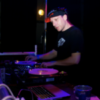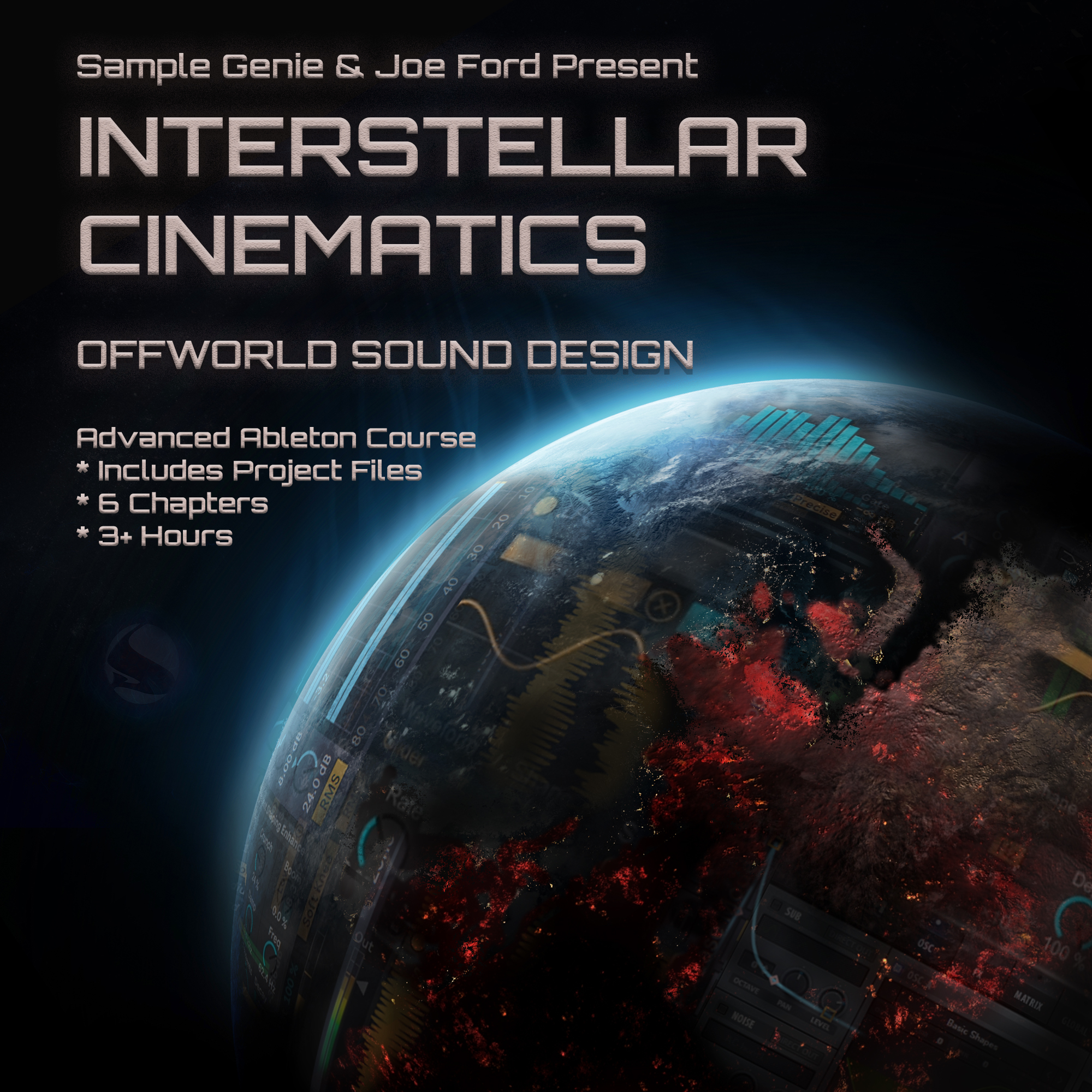InsideInfo Q&A
- This topic has 15 replies, 8 voices, and was last updated 4 years, 5 months ago by ,
 GENIE HQ.
GENIE HQ.
-
AuthorPosts
-
-
2020-01-22 at 00:26:41 #120734,
 InsideInfoParticipant
InsideInfoParticipantHey people, Paul here, Cheers for tuning into my tutorials for this years Sample Genie!
For the most recent video I wanted to show people how to progress a track you started but got a bit stuck on by using existing parts and messing around with them to create new things. I’m a bit crap at explaining super technical things and my workflow is kind of messy and all over the place so with that in mind if anyone has any questions i’ll answer them as best I can!
Someone on here asked about how to record the output of your DAW in sound forge, and that depends really on your computer or sound card, I use an RME sound card and the totalmix software has an option to loop the PC audio back into inputs 1&2. I believe you can do it in other ways but it depends on your hardware. You could always attach a field recorder to your DAW as well, I use one for capturing hardware synths etc when I don’t want a screen in front of me.
Anyway let me know any questions you have and ill get back to you on here asap.
-
2020-01-22 at 06:22:26 #120746,
 STRUCTUREDNBParticipant
STRUCTUREDNBParticipantHi man ! Hope u good, first of all thanks for the recent tutorials !
My question is , in term of creativity and workflow, it is better to work post prod & sound design on some different sessions and create a pack of samples to down a track with (drums synth, drum acoustic, bass, atmosphere,..) – or – writte the whole track from scratch directly and layer with samples etc..
thanks u so much & big up/respect from Belgium !
btw my english language is so bad :-/-
2020-01-22 at 23:54:31 #120852,
 InsideInfoParticipant
InsideInfoParticipant@STRUCTUREDNB
I tend to do a bit of both, I make samples all the time, messing around and playing with sounds so i have a batch of fresh samples to work with which will help get a vibe going on a track, once i have a track going i work out what I will need for the track and then do another round of sound design making sounds specifically for the track (i.e drum edits, bass variations etc) Hope that helps!
-
-
2020-01-22 at 13:58:33 #120783,
 JoeRodriguezParticipant
JoeRodriguezParticipantHi bro! Excellent material, I have to say that I really dig your videos, and I am taking your advices in experimentation from analog to digital, but the things is, I am trying to create my own samples from soft synths and hardware, and already made son nice basslines and 8, 16 – bars drops, but I am struggling to get out of those loops, so my question is what is your approach in terms of arrangement?
Greetings from Latin America.
PS.
Excuse my grammar.-
2020-01-23 at 00:10:03 #120855,
 InsideInfoParticipant
InsideInfoParticipantto take a track beyond a loop stage i write down all the things i think the track needs in order for it to stand on its own, it might be a vocal, more melodys, new bass elements etc. I will then either go searching for more samples to add to the track or start making sounds for it. I always make a “do list” for each track i’m working on of things it needs. When i’m not working on it i will get ideas to try out and i will just write them down. I find stepping away from the track and listening to other music helps with this. I also sketch out an arrangement for it so i have lots of spaces to fill in with sounds / edits /changes to keep it interesting. So i will sketch out an intro, drop, rollout, breakdown etc and start filling in the gaps
-
-
2020-01-22 at 15:01:49 #120791,
 TomParticipant
TomParticipantHey Paul,
Thanks for sharing your workflow, I always find your casual seemingly causal approach refreshing.
My question is actually on your mix approach so sorry if it’s slightly off topic.
I also use modular in my projects but often find that I struggle to get a cohesive mix if I use to many different samples that I have made from it. Because the output from the modular is so sonically variable it can sound a bit all over the place if you know what I mean.
So do you have any tips on getting different modular samples to gel together without EQing great chunks out of each sound.
Cheers
Tom
-
2020-01-23 at 00:18:15 #120856,
 InsideInfoParticipant
InsideInfoParticipantYeah i know what you mean about the modular being a bit all over the place, honestly i just tame it with EQ and compression though, I have a compressor module in my modular synth (the WMD MSCL) that i run things into which does a good job at taming things from the source, also adds a fair bit of character to the sound so that’s quite handy. I treat all the modular stuff as samples really, so i load them into Falcon and filter / pitch them accordingly with that, or bring it into an audio track and chop out all the shit bits 😀
-
-
2020-01-22 at 19:33:25 #120821,
 GENIE HQKeymaster
GENIE HQKeymasterCopying a question in another recent thread from Gareth:
Hi,
Just watching the second (I think) part of the InsideInfo latest series. He mentions with time stretching, spectral sounds. So when slowing down a sound, you can hear all the individual notes that make up the sound.
I’m really curious as to what it means as ‘spectral’. Does it mean different frequency ranges, low, mid and high? Or does it mean more then this, like stereo field vs mono field etc?
It’s mentioned around 10+ minutes in or so.
Thanks!
-
2020-01-23 at 00:40:02 #120859,
 InsideInfoParticipant
InsideInfoParticipantAh yes when i said spectral i meant the sound i made there had a sort of wierd watery quality to it that sounded like it had been processed with a spectral filter or something. The kinda sound you get out of Izotope Iris, Or the spectral smear in NI Molekular, or the Rossum Panharmonium which is a eurorack spectral processor, I love messing around with those tools as you get some really wierd sounds from them, great fun 🙂
The falcon timestreching algorithm introduces these interesting artefacts at extreme settings that can be quite useful, i use timestreching a lot to create new sounds from existing parts.
-
-
2020-01-26 at 16:15:14 #121270,
 MoeParticipant
MoeParticipantHi Paul,
thanks so much for your tutorial. Learned a lot from it. Here are some questions, that came up to me while watching.
What Plugins are essential for your workflow?
Do you have a certain workflow while scanning through your recorded audio material or are you listening back to the whole session?
I am thinking about starting with modular synthesis. What modules would you recommend as a starter setup?Thanks
-
2020-02-01 at 20:35:00 #123434,
 InsideInfoParticipant
InsideInfoParticipantessential plugs for me are Falcon, The Melda creative bundle, Fabfilter bundle, D16 FX. Could get by fine with just those.
I listen back to the whole modular session and chop out the best bits
For a start up modular, Really depends where you want to go but for a synthesis based setup, Oscillator wise you cant really go wrong with plaits, as it has so many different synth types in a small module. Then A nice filter, I have a Xaoc belgrad which is amazing, Then modulation source of which there any many, Maths is a good one. You can build around that system and add what you need but youd be able to get a ton of sounds from just those modules alone.
-
-
2020-01-29 at 09:50:03 #121557,
 AdamParticipant
AdamParticipanti heard you are good chief. so …. what is your favorite recipe? 😀
-
2020-02-01 at 20:38:50 #123435,
 InsideInfoParticipant
InsideInfoParticipantha! good question. I make a pretty good Thai fish curry, but ill save typing out recipes for my career as a chef once im done with music 😛
-
-
2020-02-01 at 11:45:46 #123318,
 ClovisParticipant
ClovisParticipantHello Paul,
Thank you for this great tutorial and for answering my question about recording in soundforge.
I also had a couple other questions:
First one is about your modular system, what random lfo are you using and which one would you advice for this type of use?
I use mutable stages but unfortunatly, it doesn’t generate a random signal. So I have to modulate a “carrier” lfos rate by another lfo that is also modulated by another lfo (etc) to kinda emulate a random signal but it doesn’t work so well.Second one is about some advices in order to take the best parts of the audio generated by a modular rec session. Which size of chunk would be the best in order to make it optimal for the sampler? And do you set a time limit when you’re recording to make it easyer when it comes to take out the best bits? (For instance, I found very difficult to edit a 1h + record)
Last question is about note keys. Do you care about them when sorting the freshly created samples or do you adjust them only when you’re producing a track?
Thank you!
Big respect!
-
2020-02-01 at 20:45:53 #123437,
 InsideInfoParticipant
InsideInfoParticipantI use Mutable Marbles as a random source, Really good and gives you 3 outputs. could also use sample and hold on the Disting.
I dont really have a limit on the time i extract as a chunk, sometimes it can be long whole sequences, or a tiny single sound. I categorise everything, so small stabs go in stabs folder, sequences go in sequences folder, totally depends. Tend to record in 10 or 20 min segments but sometimes go over depending on how lost i get!
You know sorting things by key is something i keep thinking i should try, but then i always think maybe i will focus too much on finding things in the right key rather than things that might work but need re-pitching, so currently no, keys are all over the place atm.
-
-
2020-02-03 at 13:55:32 #123867,
 GENIE HQKeymaster
GENIE HQKeymasterBig thanks to Paul for giving us the inside info 😛
-
-
AuthorPosts
- You must be logged in to reply to this topic.


